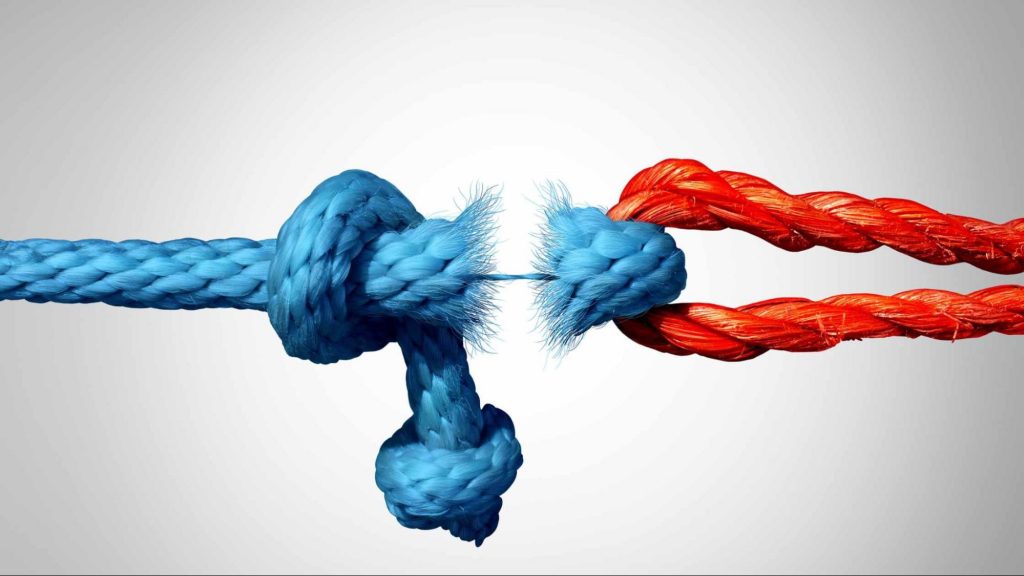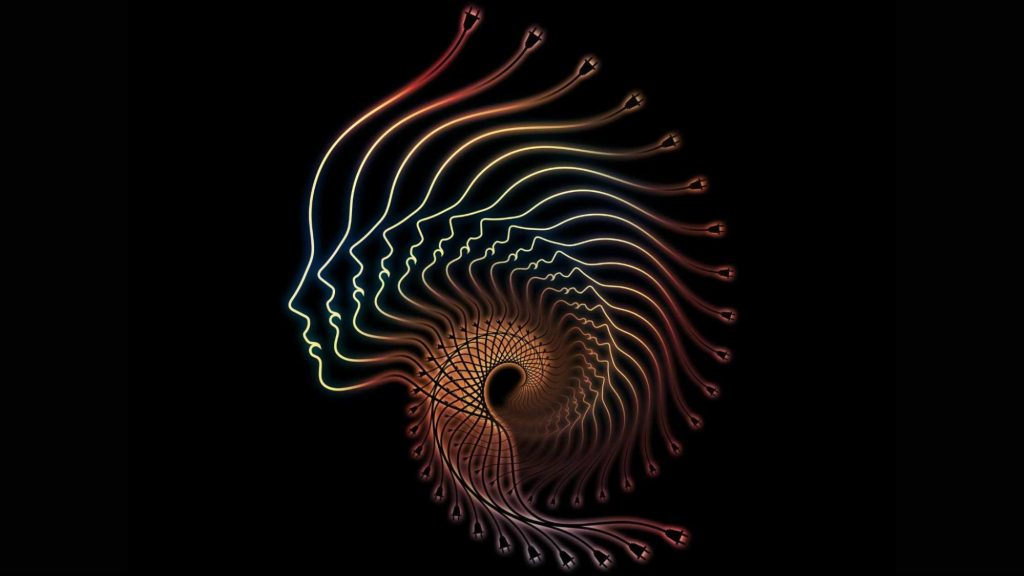Written by Dr. Ladan Eshkevari, PhD, CRNA, LAc, FAAN
In this Post
- What is Disassociation?
- Disassociation vs. Dissociation
- Disassociation and Trauma
- Studying Ketamine Dissociation
- Investigating the Healing Potential of Disassociative Effects
- The Power of Disassociation
- Ketamine’s Disassociative Effects
- Ketamine vs. Traditional Drugs
- Combining Talk Therapy with Ketamine
Understanding Ketamine and Disassociation
Ketamine has created a hot debate among scholars, stakeholders, and psychologists. Why?
Ketamine is a dissociative class of psychedelic drugs that causes people to feel detached from their bodies and physical environment. Disassociation from ketamine also encompasses hallucinogenic effects, such as distorted sight and sound, sensory deprivation, and dream-like states.
Those familiar with ketamine have probably heard about the hypnotized, dreamy, detached feelings that arise. And that can make people uncomfortable because they connect mind-altering effects with issues like drug abuse. But dissociation is a normal part of ketamine therapy that could even support the healing process.
This article unpacks ketamine and disassociation misconceptions, uncovering its mechanisms, risks, and therapeutic powers.
What is Disassociation?

So, what is disassociation exactly? Disassociation is when people feel disconnected from reality and/or themselves. A person disassociating might feel like they are having an “out of body” experience, where they observe themselves from the outside. Their thoughts and emotions feel distant.
Dissociation is a normal process. It is common for people to sometimes “lose touch” and awareness with their immediate surroundings. Examples of typical dissociation include:
- Daydreaming
- Highway hypnosis (dissociation while driving)
- Getting lost in a book or movie
However, disassociation can also be a sign of unresolved issues. It can manifest as unhealthy coping mechanisms for overwhelming or traumatic experiences. In extreme cases, this can lead to significant disruptions in a person’s sense of self, memory, and awareness.
Disassociation vs. Dissociation
People often use the terms “disassociation” and “dissociation” interchangeably. And that’s okay because, at their core, they describe the same feeling, which is to disconnect. This article will also use the spellings interchangeably.
Disassociation and dissociation both:
- Refer to a state of separation from thoughts, feelings, or identity.
- Can involve disrupting the normal operating processes of consciousness, memory, or perception.
- Are often mechanisms for stress or trauma.
However, the psychology field does sometimes distinguish between the two.
Disassociation is a broad term for any example of feeling detached from reality. Dissociation, on the other hand, applies to extreme behaviors and psychological disorders.
Dissociation can be:
- A symptom of dissociative identity disorder (DID), characterized by two or more personalities or “alters” that control a person’s behavior and consciousness at different times.
- Characterized by a fragmented sense of self or identity, amnesia, and shifts in mood or behavior.
- An entry into trance-like states that makes the person unresponsive or unaware of their surroundings for extended periods.
Disassociation and Trauma

Stanford researchers recently studied dissociation to understand its causes and neurological mechanisms. According to the team, nearly three of every four individuals who experience a traumatic event will enter a dissociative state during or in the hours, days, and weeks that follow.
- During a traumatic experience, such as an accident, disaster, or crime victimization, dissociation can help a person tolerate what might otherwise be too difficult to bear.
- In these situations, a person may mentally detach from the triggering memory to escape the fear, pain, and horror of the event.
- Dissociation is often why victims and survivors find it difficult to remember the details of the experience.
Disassociation is a necessary part of the survival system. However, it can become a problem when dissociation becomes a pattern that people cannot separate from everyday experiences. Dissociation is a common marker of PTSD, where people involuntarily escape from reality to avoid reliving the horror.
People’s concerns about ketamine and dissociation seem logical when considering some of its symptoms and causes. Yet paradoxically, ketamine’s dissociative effects can be beneficial to the mental health field.
- For example, researchers can learn more about treating conditions, like PTSD, that cause severe dissociation by studying ketamine’s neurological mechanisms.
- Additionally, ketamine therapy-induced dissociative effects could be a key to its healing powers.
Studying Ketamine Dissociation

Using ketamine and light frequency, Stanford researchers aimed to better understand how ketamine dissociation impacts the brain. They theorized that pinpointing the neurological origin in mice could help develop targeted therapies for PTSD, borderline personality disorder, and even epilepsy that involve severe dissociation.
Researchers used ketamine and a technique called optogenetics. The method involved manipulating mice’s brain cells using light to induce a feeling of disconnection.
In the process, they found:
- At the right ketamine dose and light frequency, mice behaved in a way that suggested they were experiencing a kind of dissociation. The mice could still sense things, but they seemed apathetic toward them.
- Researchers linked this phenomenon to a specific brain protein that could be a potential treatment target for extreme dissociative conditions.

Investigating the Healing Potential of Disassociative Effects
Extreme dissociative conditions can be debilitating. However, temporary disassociation during ketamine therapy could be beneficial.
A 2015 study showed that ketamine therapy’s out-of-body effects predicted a more robust and sustained antidepressant outcome.
Researchers have several theories on this result.
- Some are skeptical that dissociation is directly linked to successful antidepressant outcomes. Skeptics think the study’s findings could be skewed by “unblinding” during ketamine clinical trials. In double-blind studies, neither the patients nor the researchers know who is receiving the actual treatment and who is receiving a placebo. However, if patients can accurately perceive when they are receiving ketamine (unblinding) due to its dissociative effects, it can introduce bias, as their expectations may influence their reported outcomes.
- Others believe that ketamine’s antidepressant action comes from the neural mechanisms that cause dissociation rather than the dissociation itself. Ketamine induces dissociation by interacting with NMDA receptors to stimulate glutamate activity. This action affects the brain’s glutamatergic neurotransmission and disrupts the normal connectivity of regions involved in perception, self-awareness, and consciousness. Research suggests that this NMDA receptor action could be the mechanism of antidepressant effects.
- Many note that ketamine-induced dissociation can also lead to altered perceptions of self and past traumatic experiences. This altered state of consciousness can mirror other psychedelic drugs, like LSD and psilocybin mushrooms, enabling people to confront and process traumatic memories. Some researchers believe that this can be therapeutic, particularly for individuals with depression rooted in unresolved trauma.
Ultimately, researchers have not definitively established whether dissociation plays a core role in ketamine’s antidepressant effects.
Some studies suggest a strong connection, while others do not. Additionally, the precise mechanisms through which ketamine exerts its rapid antidepressant effects remain a subject of ongoing investigation. Scientists must conduct additional studies with improved designs and real-time biomarker assessments to better understand the relationship.
The Power of Disassociation

Ketamine-induced disassociation could be beneficial in other ways. According to Psychology Today, disassociation itself can be healing:
- Temporary Relief: Disassociation offers a brief escape from immediate stressors or painful emotions. It allows the mind to cease churning through overwhelming thoughts.
- Psychological Rest: Healthy disassociation provides a mental pause, allowing the psyche to rest and process complex emotions. It can be a coping mechanism to temporarily distance oneself from distressing information or feelings.
- Exploration of Possibilities: Disassociation may create a mental space for exploring various thoughts and emotions, even contradictory ones, without judgment. This can help people consider different perspectives and cope with uncertainty.
Ketamine’s Disassociative Effects

Disassociation from ketamine can be unsettling for someone who has never experienced the feeling before. But the effects are a completely normal part of the experience. They are also temporary and subside within hours of the treatment.
- Depersonalization: A feeling of detachment from one’s body or self, as if observing from a distance.
- Altered Time Perception: A sense of time speeding up or slowing down.
- Distorted Body Image: Perceiving changes in the size or shape of one’s body.
- Hallucinations: Visual, auditory, or tactile hallucinations may occur, although they are more common at higher doses.
- Out-of-Body Experiences: A sensation of floating outside one’s physical body.
- Emotional Numbness: A blunting or suppression of emotional responses.
- Impaired Coordination: Difficulty performing physical tasks due to altered perception and motor control.
- Euphoria: Some individuals may experience a sense of pleasure or euphoria during dissociation.
Ketamine vs. Traditional Drugs
Avesta’s ketamine therapy patients have consistently found profound and enduring relief where traditional drugs failed.
- Treatment-resistant depression
- Bipolar depression
- Post-traumatic stress disorder (PTSD)
- Obsessive-compulsive disorder
- Social anxiety disorder
- Substance dependence
- Suicidal thoughts
- Chronic pain
Antidepressants have a lag of onset (slow-response window) that can take weeks to months to take effect. In contrast, ketamine infusions work rapidly (immediate-response window), reducing symptoms, often within two hours.
Traditional drugs, like opioids, are also highly addictive and vehemently over-prescribed. While ketamine can be used recreationally like other “party” drugs, it is not physically addictive and has lower abuse potential.
Ketamine may also offer advantages over traditional medications due to its unique receptor action. Ketamine is the only antidepressant that targets glutamate-related NMDA receptors. Many mental health disorders, like depression and anxiety, are associated with decreased glutamate, one of the brain’s primary chemical messengers. Glutamate also supports neuroplasticity, the brain’s ability to adapt and change with new experiences.
Combining Talk Therapy with Ketamine
Most medical professionals note ketamine is most effective when paired with talk therapy as part of a larger treatment plan.
Ketamine’s disassociative effects can help tone down mental and physical symptoms, giving patients a reprieve from stress and their immediate condition. However, follow-up therapy sessions are critical to help people address the underlying causes of their issues.
Patients looking to get the most out of ketamine treatment should seek clinics like Avesta that offer additional mental health support, like group therapy or medication management.
The Bottom Line
Ketamine’s disassociative effects may raise concerns. But they also open doors to potential breakthroughs in mental health treatment. Ketamine’s unique receptor action, rapid response, and ability to promote neuroplasticity offer hope for individuals with treatment-resistant conditions like depression and PTSD. Patient stories are a reminder that, sometimes, unconventional paths can lead to remarkable therapeutic outcomes.
Schedule a consultation with Avesta today and find out if ketamine IV Infusions can help support your healing journey.



